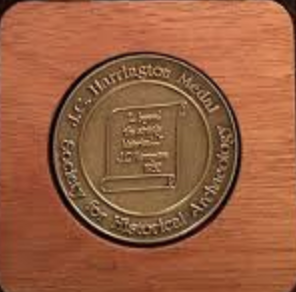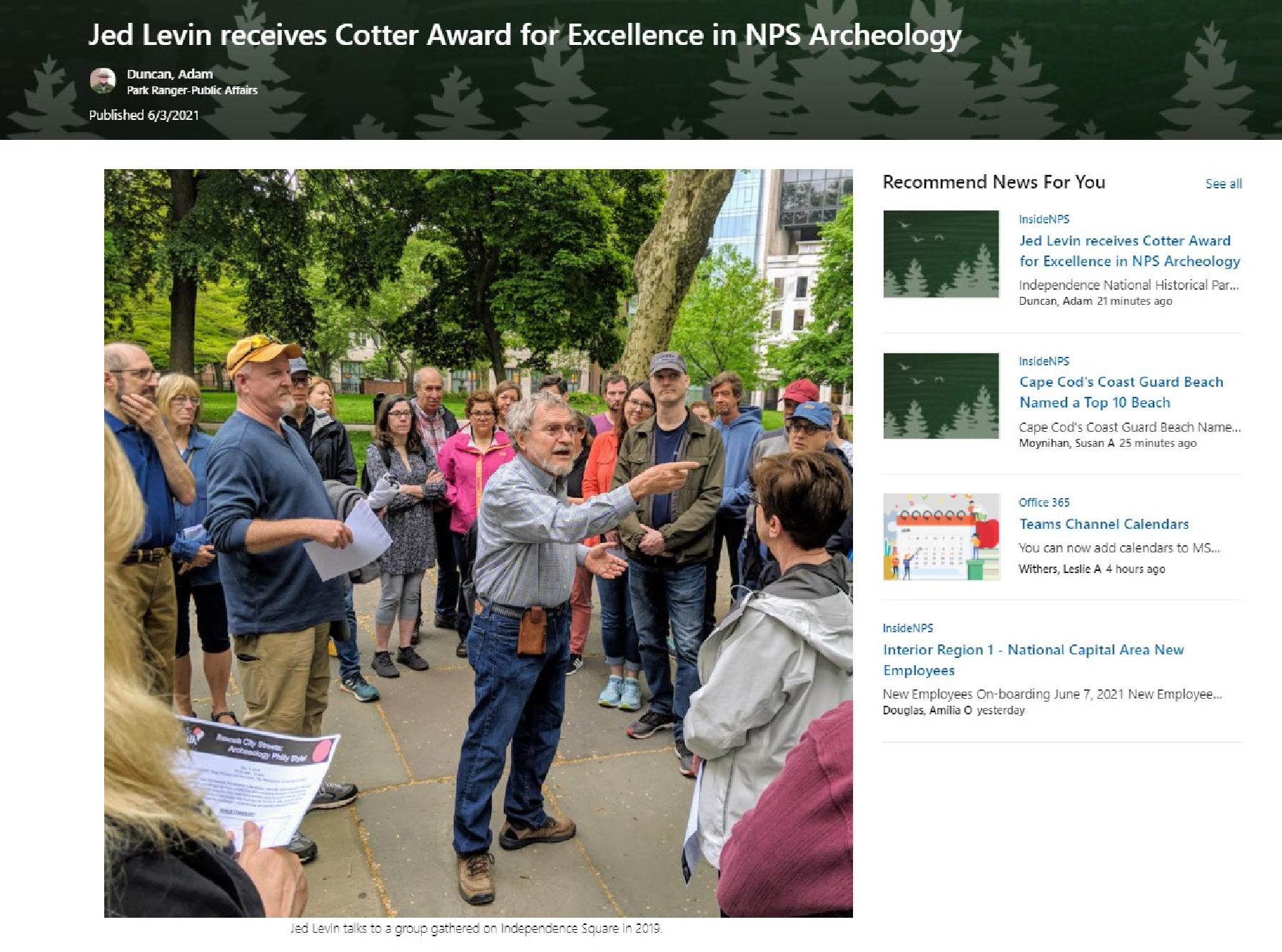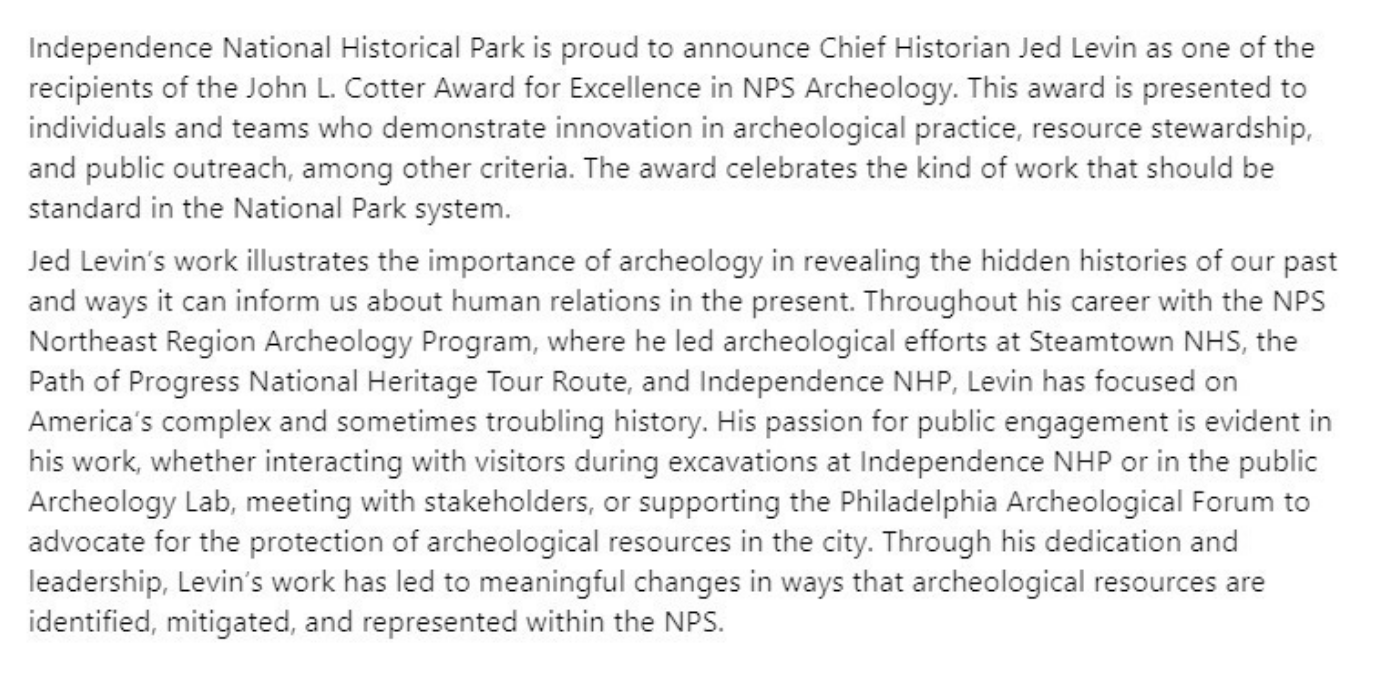PAF Home
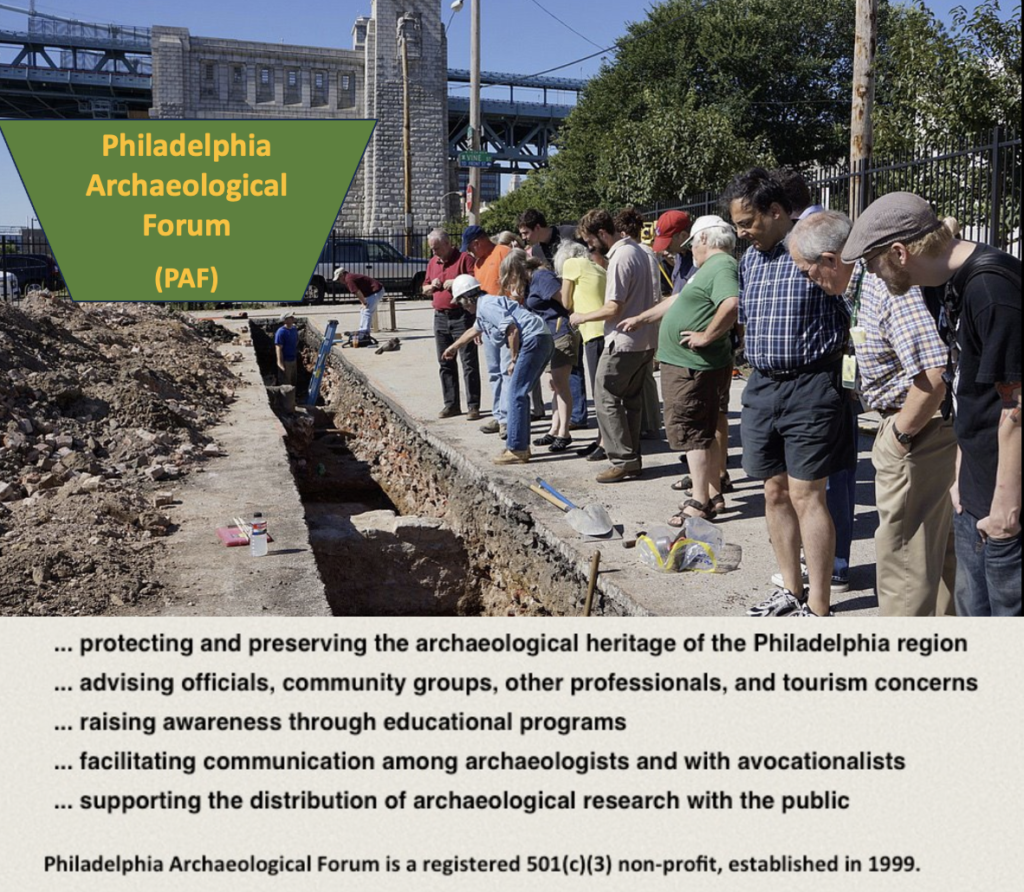
Learn more about PAF here
Photo: 2013 PAF site visit to the West Shipyard excavation (N. Delaware Ave. at Vine Street).
Upcoming lecture of interest in our area…
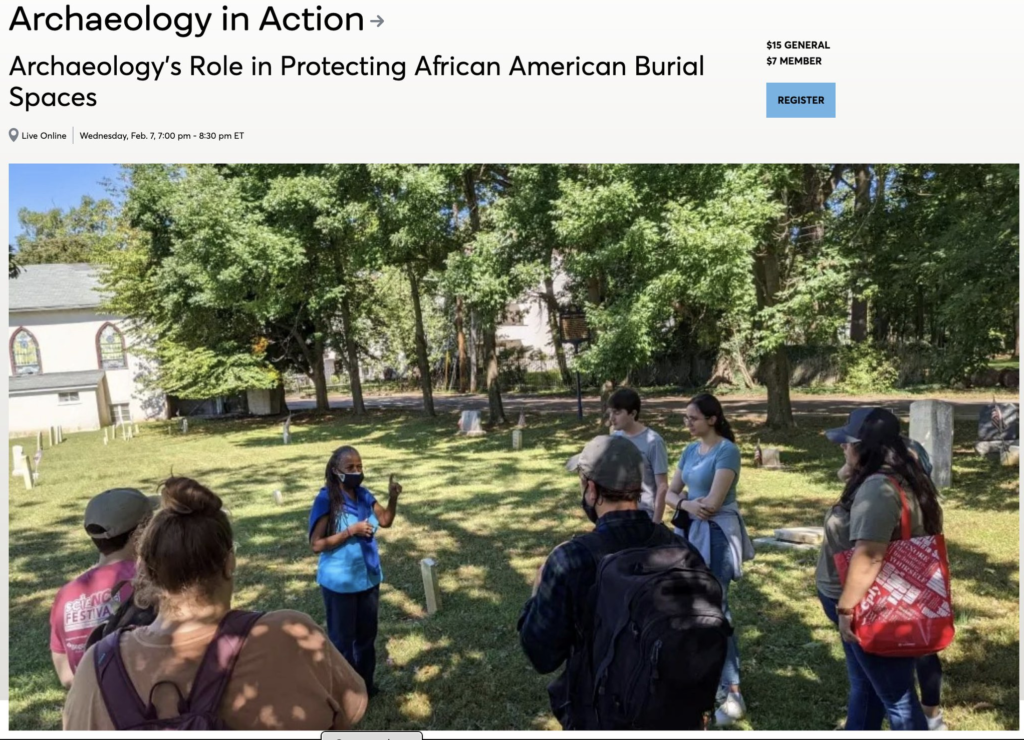
Live Online –Wednesday, Feb. 7th, 7:00 pm – 8:30 pm ET
Archaeology in Action
Archaeology’s Role in Protecting African American Burial Spaces
Since 2019, documentation and reconstruction of threatened and lost African American cemeteries in Pennsylvania has been the focus of student research in digital archaeology courses in the Penn Museum’s Center for the Analysis of Archaeological Materials. These neglected and hidden landscapes are the legacy of unjust policies, as well as tangible evidence for the disruption of generational memory. In this lecture, Dr. Jason T. Herrmann will present how project-based coursework can help to address these past wrongs and discuss the role that archaeology can play in confronting injustices of the past.
Jason T. Herrmann, Ph.D., is the Kowalski Family Teaching Specialist for Digital Archaeology in the Center for Analysis of Archaeological Materials at the Penn Museum and a lecturer in the Department of Anthropology. As an anthropological archaeologist, he uses geographic information science, aerial and satellite remote sensing, and archaeological geophysics to understand how the environment has influenced patterns of settlement and land use, as well as the ways people have transformed landscapes.
To Register….
PAF Congratulates Dr. David G. Orr on receiving the 2024 J.C. Harrington Medal!
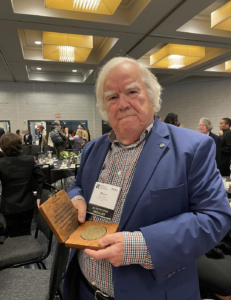
David Orr, recipient of the 2024 J.C. Harrington Award. (Photo courtesy of Dr. Audrey Horning.)
The Society for Historical Archaeology’s J.C. Harrington Award is presented in recognition of a life-time of contributions to the discipline of Historical Archaeology centered on scholarship. No more than one Harrington Medal is presented each year. This year’s recipient is someone well known to the Philadephia archaeology community — Dr. David G. Orr! Dave was presented with the J.C. Harrington Award on January 3rd, 2024, during the annual meeting of the Society for Historical and Underwater Archaeology held this year in Oakland, California. Established in honor of historical archaeology pioneer Jean Carl Harrington (1901-1998), the award is an inscribed medal struck in antique bronze.
Among Dr. Orr’s many, many, achievements are his deep and wide contributions to the Philadelphia-area archaeological community. Between 1978 and 2003, he was a regional archaeologist in the National Park Service serving mainly in the Mid-Atlantic Region based out of Philadelphia. He is a long time local educator and mentor. Most recently, he taught Battlefield and Conflict Archaeology, Urban Historical Archaeology, Heritage Management and a gen-ed course at Temple University where he now Emeritus Professor of Anthropology. At the University of Pennsylvania (1973-1978) he fostered the early theoretical development of historical archaeology and material culture studies and convened the first graduate course in Industrial Archaeology. He long taught courses at the University of Delaware, and he implemented a substantive summer intern program in archaeology between 1980-1992 with students at Lower Merion High School.
Dave Orr is a long time leader and participant in the Philadelphia Archaeological Forum where he was a founding member as well as the first President, as he was in the Oliver Evans (Philadelphia) Chapter of the Society for Industrial Archaeology (a founder and first President).
Dave’s early archaeological research in our area involved numerous local sites — Mill Creek, 310 Cypress Street, the Woodlands, Point Breeze Gas Works (a HAER project with Penn student Herbert Levy), Rittenhouse Town, Elfreth’s Alley, Moravian Street, Edgar Allan Poe House, and Area F in Independence National Historical Park. With his students in more recent decades he has worked at Graeme Park, the Henry Muhlenberg House in Trappe, Bonnin and Morris porcelain factory site, and Timbuktoo, an African-American community in New Jersey. Dave Orr has led or conducted more excavations and research projects in Valley Forge than any other individual, and has been active there from 1973 until the present.
Dave Orr’s many publications cover a wide range of topics. Among those specific to the archaeology of this area include his co-edited volumes (2014) ‘The Historical Archaeology of the Delaware Valley’ and (2019) Historical Archaeology of the Revolutionary War Encampments of Washington’s Army”, and the (2003) article, “Samuel Malchin in Philadelphia” in Ceramics in America (https://www.chipstone.org/…/Ceramics-in-America-2003/…).
PAF is pleased for Dr. David G. Orr who is a most deserving recipient of this important honor! Congratulations Dave!!!
Learn more about David Orr at PAF’s “Who We Are, What We Do Page”
NEW PUBLICATION –that draws upon archaeological research from this area…
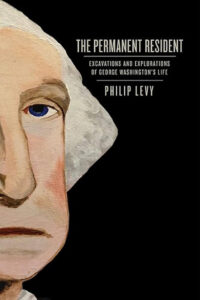
The Permanent Resident: Excavations and Explorations of George Washington’s Life by Philip Levy, Professor of History at the University of South Florida.
Chapter 6, entitled ‘What Hides in Plain Site at Philadelphia’s “President’s House”‘, discusses the excavation findings, the resulting commemoration, and the broader, general context of the site at 6th and Market Street.
This book has been selected to receive the Society for Historical Archaeology’s 2024 James Deetz Book Award.
NEW PUBLICATIONS by PAF members
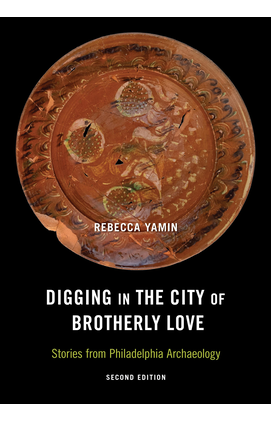
Now available from Temple University Press:
*New Edition: Three new chapters (burial grounds, Rte I-95, and the whole story of the Museum of the Amer Revolution) and addenda to a couple of the older chapters:
Digging in the City of Brotherly Love:S tories from Philadelphia Archaeology: Stories from Philadelphia Archaeology
Second Edition, Rebecca Yamin, Publication Date: September 8, 2023
320 pages, 75 color photos, 2 tables, 10 figures, 91 halftones, 9 maps, 7 x 10″
New archaeological finds in Philadelphia and state-of-the-art analyses bring more of the city’s unknown past and its people to life
Historic Philadelphia has long yielded archaeological treasures from its past. Excavations required by the National Historic Preservation Act have recovered pottery shards, pots, plates, coins, bones, and other artifacts relating to early life in the city. This updated edition of Digging in the City of Brotherly Love: Stories from Philadelphia Archaeology (Publication Date: September 8, 2023) continues to use archaeology to learn about and understand people from the past.
Rebecca Yamin adds three new chapters that showcase several major discoveries from recent finds including unmarked early eighteenth-century burial grounds, one of which associated with the first African Methodist Episcopal (AME) Church, in the oldest part of the city; a nineteenth-century working-class neighborhood built along the path of what is now Route I-95 and was once home to Native American life; and the remains of two taverns found on the site of the current Museum of the American Revolution.
Yamin describes the research and state-of-the-art techniques used to study these exciting discoveries. In chronicling the value of looking into a city’s past, Digging in the City of Brotherly Love brings to life the people who lived in the early city and the people in the present who study them.
Rebecca Yamin is a historical archaeologist specializing in urban archaeology and the former director of the Philadelphia branch office of John Milner Associates, Inc., a company that specialized in historic preservation and cultural resource management. She is the author of Archaeology at the Site of the Museum of the American Revolution (Temple), which won the 2022 James Deetz Book Prize given by the Society for Historical Archaeology, and Rediscovering Raritan Landing: An Adventure in New Jersey Archaeology; the co-author of The Archaeology of Prostitution and Clandestine Pursuits; and the co-editor of Landscape Archaeology: Reading and Interpreting the American Historical Landscape.
320 pages, 75 color photos, 2 tables, 10 figures, 91 halftones, 9 maps, 7 x 10″
Order: https://tupress.temple.edu/…/digging-in-the-city-of…
Paper Price: $35.00 (EAN: 9781439922101); eBook Price: $35.00 9EAN: 9781439922118)
Publication: Sep 2023
“Cursed Be He That Moves My Bones”: The Archaeologist’s Role in
Protecting Burial Sites in Urban Areas, by Elizabeth D. Meade and Douglas Moone in Advocacy and Archaeology: Urban Intersections, edited by Kelly M. Britt and Diane F. George, Berghahn Press, New York. (Chapter 2) which can be ordered here…
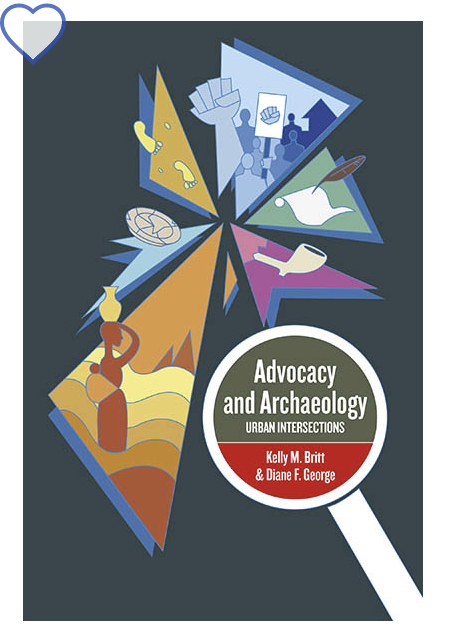
“Great earthly riches are no real advantage to our posterity”: Space, Archaeology and the Philadelphia Home, by Deborah L. Miller, in At Home in the Eighteen Century: Interrogating Domestic Space, edited by Stephen G. Hague and Karen Lipsedge, Routledge Press, 2022 (Chapter 8):
Chapter Abstract Philadelphia Merchant Caleb Cresson began developing the northern half of a Philadelphia city block in the early 1760s. Within this small domain he built his own brick home and more than twenty other houses, including multiple tenements, which he rented primarily to working and middling class families. It was in this environment that Cresson and his tenants coexisted for the next forty years, and while their lived experiences were often blurred by the communal nature of urban living, study of the homes they lived in and the objects that they owned reveals that their domestic lives differed greatly, particularly in terms of space. Archaeological excavations on the block, however, revealed that while the domestic interiors of the lower sorts were modest, the goods in their home were illustrative of their aspirations to respectability. Through the consumption of objects, these groups were forging their own identities as participants in the greater culture of the Atlantic World.
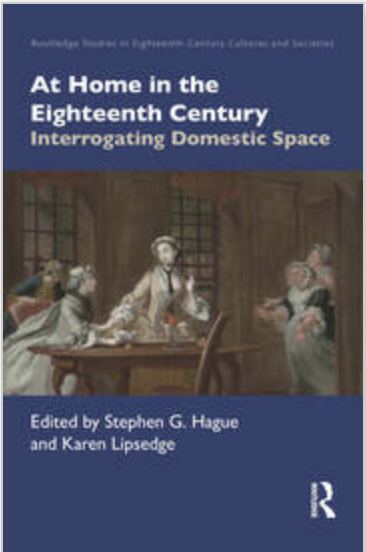
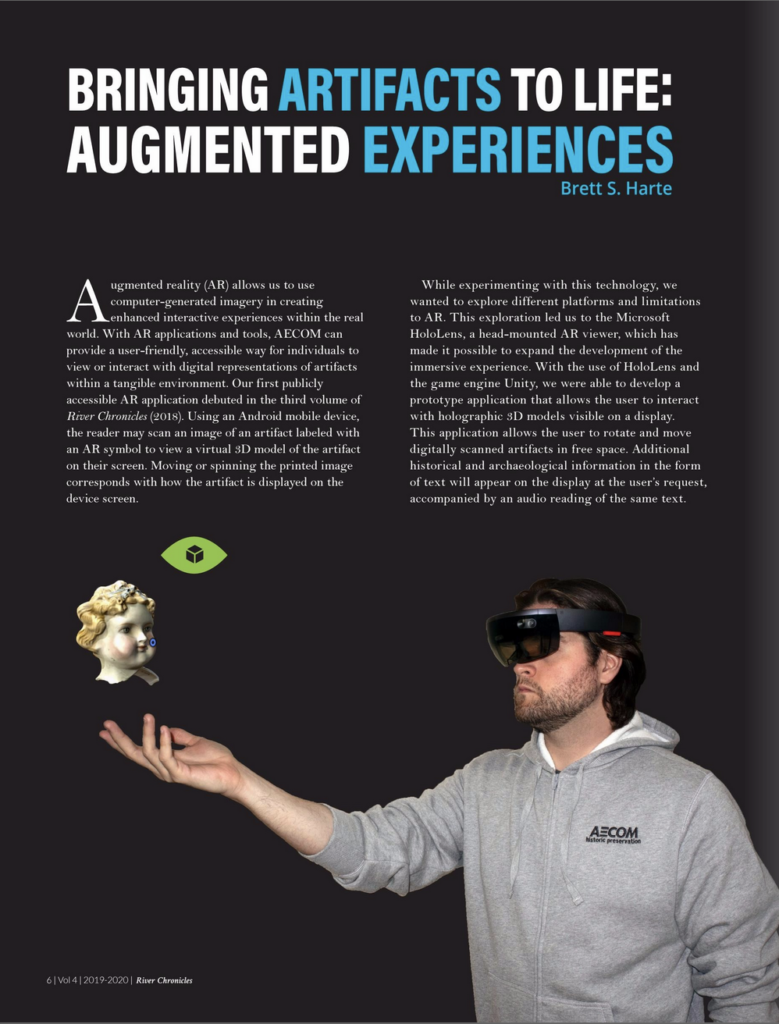
Published in River Chronicles, the Journal of Philadelphia Waterfront Heritage & Archaeology, Volume 4, 2019-2020, pages 6-7.
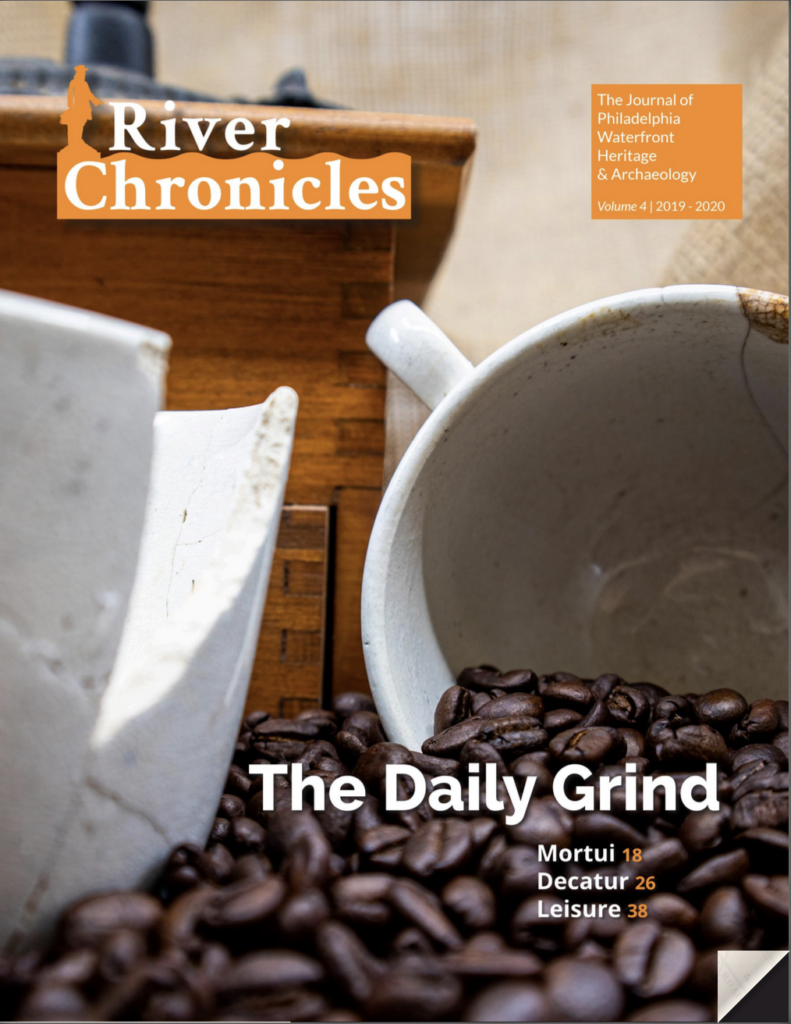
AECOM has created the archaeological journal, River Chronicles, to highlight the over 1,000,000 artifacts and hundreds of features uncovered during archaeological excavations along the I-95 corridor in Philadelphia. The recovered artifacts reveal 6,000 years of history associated with the Port Richmond, Kensington-Fishtown, and Northern Liberty neighborhoods. AECOM is conducting these excavations as part of the I-95 Highway Improvement Project on behalf of the Pennsylvania Department of Transportation and the Federal Highway Administration.
“The Pennsylvania Department of Transportation and the Federal Highway Administration are undertaking a long-term, multiphase project to improve and rebuild Interstate 95 (I-95) in Pennsylvania, within the historic city of Philadelphia. Given the complex urban setting, the
See Steve Tull, Sustainable Neighborhood Public Outreach: I-95 GIR Archaeological Investigations in Philadelphia, Advances in Archaeological Practice, 2020, pp. 1–17
archaeological subsurface testing for the I-95 Girard Avenue Interchange Improvement Project is being guided by a programmatic agreement under Section 106 of the National Historic Preservation Act and a categorical exclusion under the National Environmental Policy Act. Through data-recovery excavations, the contractor for the project, AECOM, has documented 30 historical-period and Native American
archaeological sites. The project includes its own professional journal, live interactive reporting, and a public archaeology center.”
Current Exhibits of note in our region….
Archaeological informed Art at the Museum of Art in Wood (through Feb. 18, 2024)
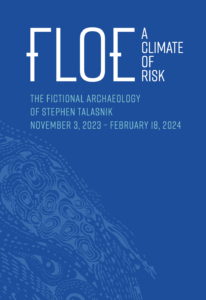
Archaeology and Philadelphia are again featured in a local art installation. This work is a fictional account of a Philadelphia whose civilization was buried by a natural disaster brought on by climate change. The only evidence of this society is through an “archaeological collection” that is presented in the exhibition. Entitled, Floe: A Climate of Risk: The Fictional Archaeology of Stephen Talasnik is at the Museum of Art in Wood until February 18, 2004.
* U-2 SPY PLANES & AERIAL ARCHAEOLOGY at the Penn Museum (through Fall 2023)
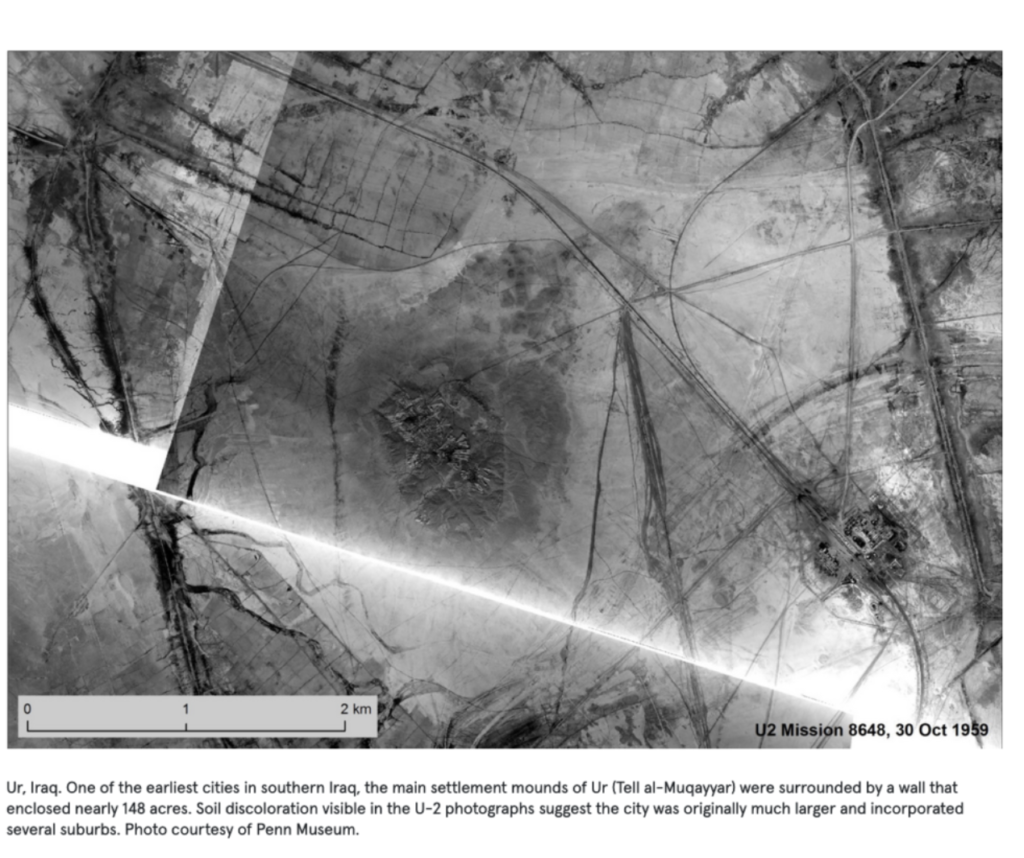
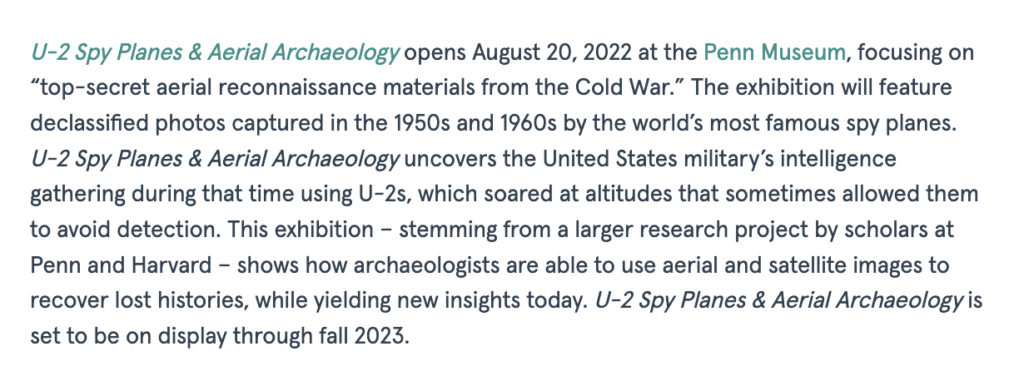
* I-95 Archaeology Center ONLINE (short video tour, 4:18 minutes):
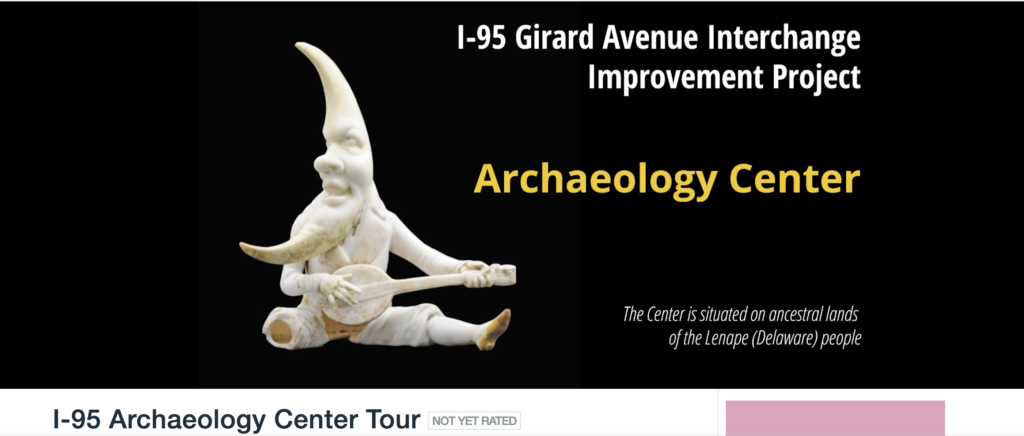
Would you like to talk with archaeologists and get up close and personal with artifacts recovered by AECOM cultural resource managers during the Pennsylvania Department of Transportation’s I-95 Girard Avenue project? The Archaeology Center offers this unique interpretive experience free to the public. Located in the heart of the project area, the Archaeology Center serves as a working archaeological laboratory while the I-95 Girard Avenue Interchange Project is ongoing. The Archaeology Center is open most Wednesdays, 12-4 pm. Please call ahead to confirm. Masks are strongly encouraged. 900 E. Columbia Ave Philadelphia, PA 19125. 215-982-2792. This Is across N. Delaware Avenue from Penn Treaty Park.
RECENT RECOGNITION FOR CONTRIBUTIONS MADE TO PHILADELPHIA ARCHAEOLOGY…
Rebecca Yamin, Recipient, 2022 Society for Historical Archaeolog, James Deetz Book Prize
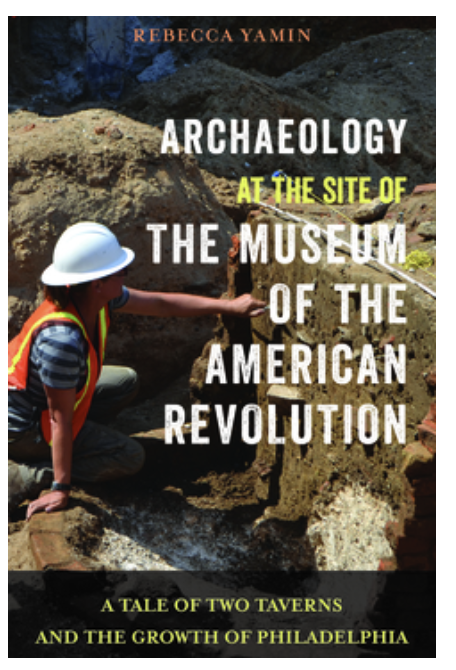
An excerpt of this award winning book, published by Temple University Press can be read here.
The James Deetz Book Award is named for James Deetz (1930-2000), whose books are classics for professional archaeologists as well as for non-specialists. Deetz’s accessible and entertaining style of writing gave his books influence beyond the discipline because they are read by a broad audience of non-specialists. The Deetz Award is intended to recognize books and monographs that are similarly well-written rigorous scholarship accessible to all potential readers” (SHA).
Avenging the Ancestors Coalition (ATAC), Recipient, 2022 Society for Historical Archaeology, Award of Merit
“…for their work to honor and highlight the enslaved men, women, and children who labored in Philadelphia at the President’s House, which is also known as America’s first White House, and further recognizing ATAC for its persistent fight to preserve African American historical sites in the City of Philadelphia”.
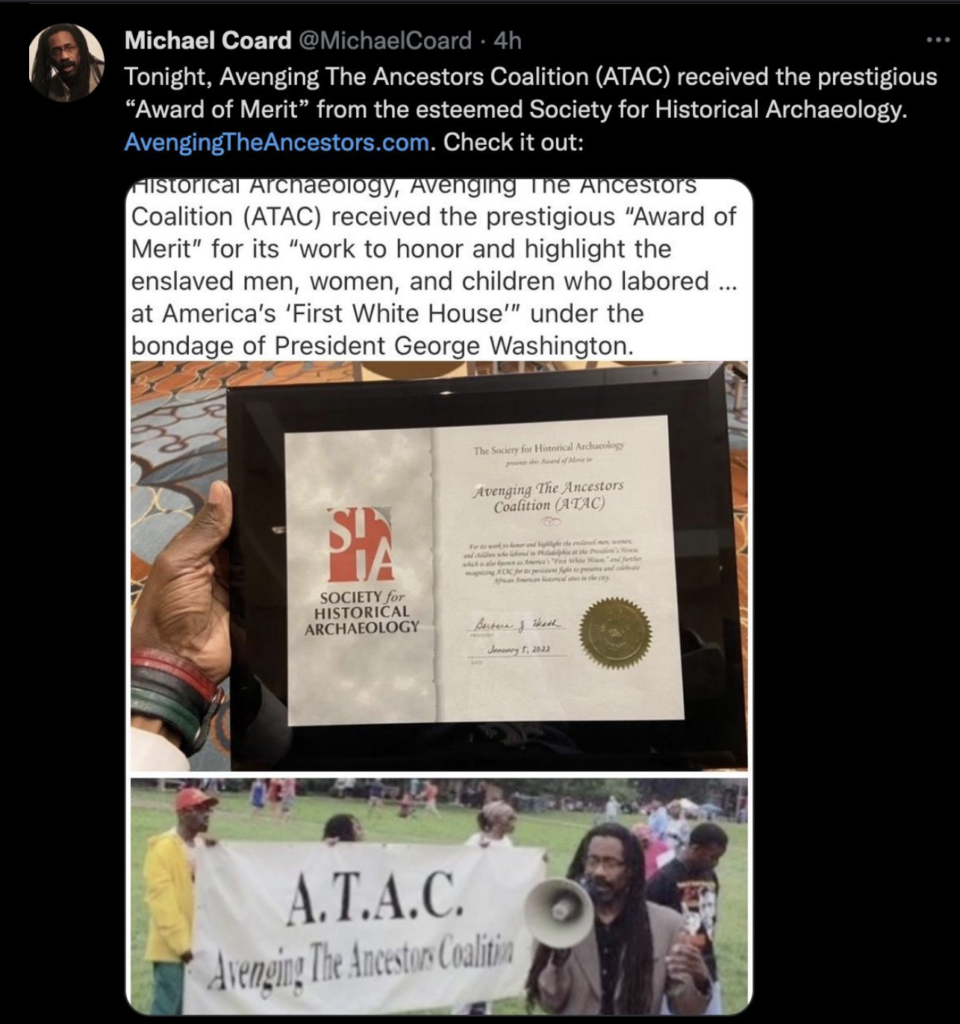
Established in 1988, the SHA Award of Merit recognizes specific achievements of individuals and organizations that have furthered the cause of historical archaeology. Although the award is given for scholarly as well as other contributions, the honorees need not be professional archaeologists nor members of The Society for Historical Archaeology. A full and varied range of contributions to the field are considered. The Award of Merit is an inscribed certificate under glass, suitably framed, and normally a number of awards are given each year. (SHA)
Pennsylvania Department of Transportation (PennDot), Engineering District 6, Recipient, 2022 Society for Historical Archaeology, Daniel G. Roberts Award for Excellence in Public Archaeology
“…for their public interpretive work on the I-95 Girard Avenue Interchange Reconstruction Project, which passes through a series of historic Philadelphia neighborhoods”.
The public interpretive work recognized by this award includes AECOM’s online interactive archaeology report, Digging I-95, the associated Archaeology Center museum (currently closed due to COVID restrictions but you can view a short video about it), the related publicly directed journal, River Chronicles, and the many outreach activities undertaken by subcontracted AECOM cultural resource personnel.
This public outreach makes available to the public archaeological discoveries from along the Delaware River waterfront in the Philadelphia neighborhoods of Northern Liberties, Kensington-Fishtown, and Port Richmond. These sites, and the artifacts within them, were uncovered during archaeological excavations conducted in advance of construction for the I-95 Girard Avenue Interchange Improvement Project. Read more about the public outreach that earned this award in this online Cambridge University Press report by Stephen W. Tull, Sustainable Neighborhood Public Outreach: I-95 GIR Archaeological Investigations in Philadelphia:
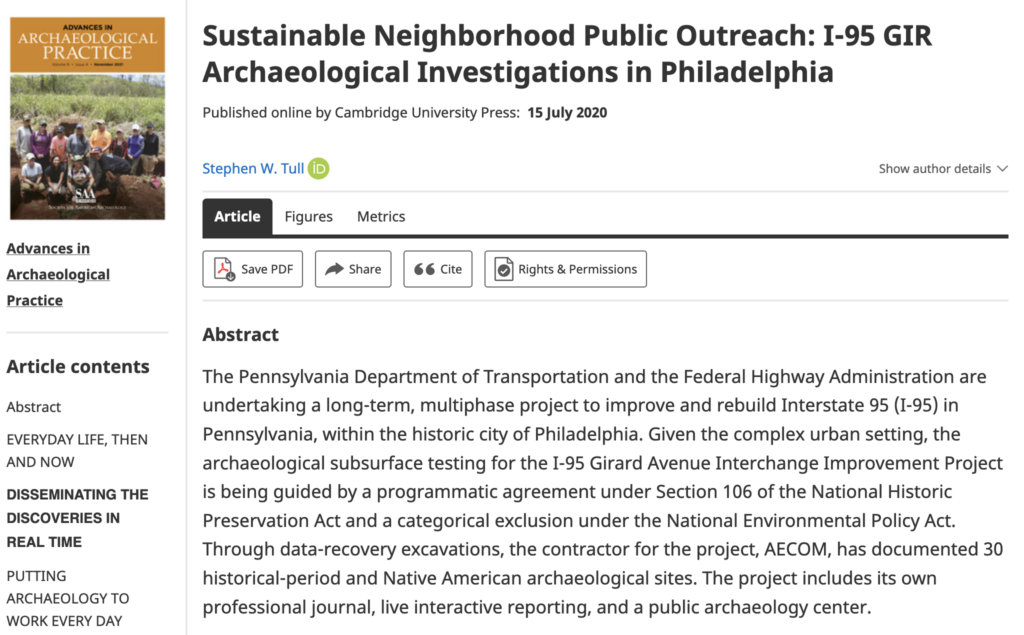
Established in 2011, the SHA Daniel G. Roberts Award for Excellence in Public Historical Archaeology recognizes outstanding, sustained accomplishments in public historical archaeology by individuals, educational institutions, for-profit or non-profit firms or organizations, museums, government agencies, and private sponsors. This award was established in honor of Daniel G. Roberts, a Philadelphia native who was a pioneer in the fields of cultural resource management, historical archaeology, and public archaeology. (SHA)
Independence National Historical Park, Recipient, 2022 Society for Historical Archaeology, Award of Merit
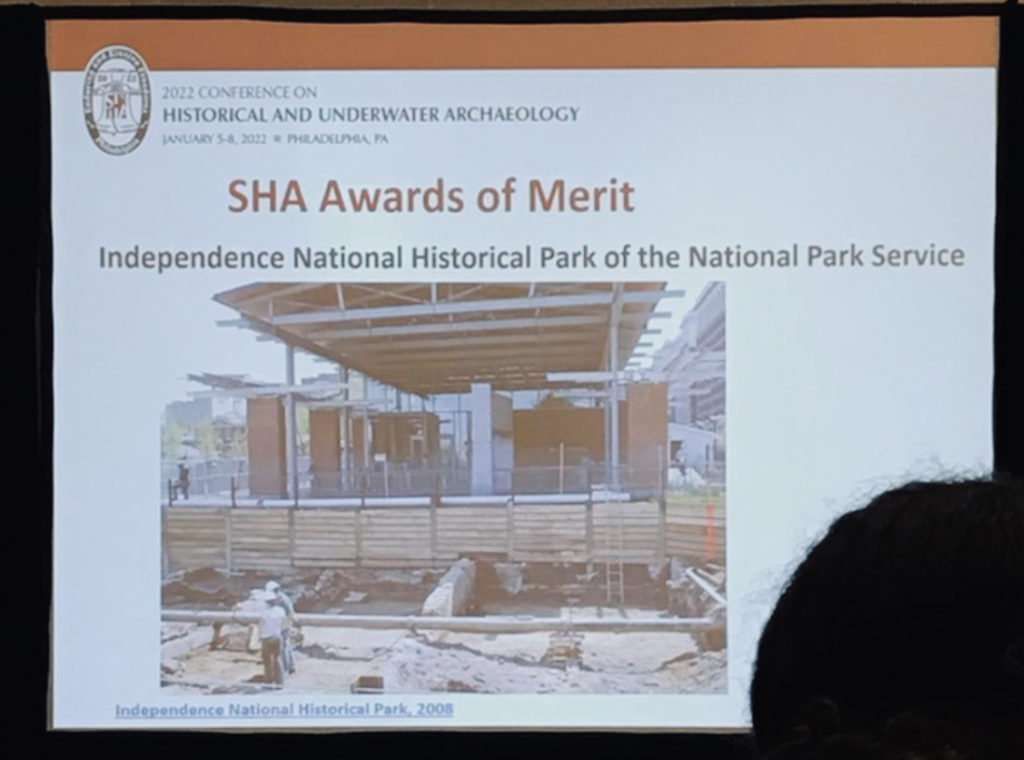
The Philadelphia Archaeological Forum, Recipient, 2022 Society for Historical Archaeology, Award of Merit
“…for shining a spotlight on Philadelphia’s incredible archaeological heritage and for being an advocate for studying and preserving Philadelphia’s archaeological resources.”
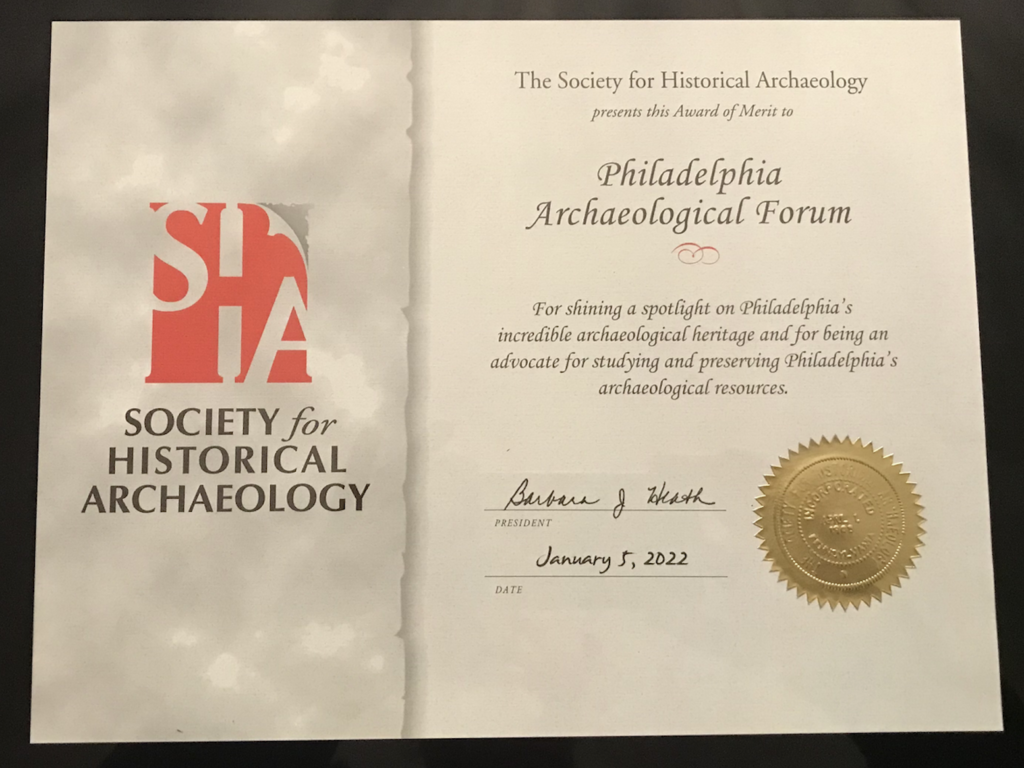
Learn more about PAF here…
Formed in 1967, the Society for Historical Archaeology (SHA) is the largest scholarly group concerned with the archaeology of the modern world (A.D. 1400-present). The main focus of the society is the era since the beginning of European exploration. SHA promotes scholarly research and the dissemination of knowledge concerning historical archaeology of the modern world since the time of European exploration. The society is specifically concerned with the identification, excavation, interpretation, and conservation of sites and materials on land and underwater. Geographically the society emphasizes the New World, but also includes European exploration and settlement in Africa, Asia, and Oceania.
THE PAF BURIAL GROUND DATABASE…
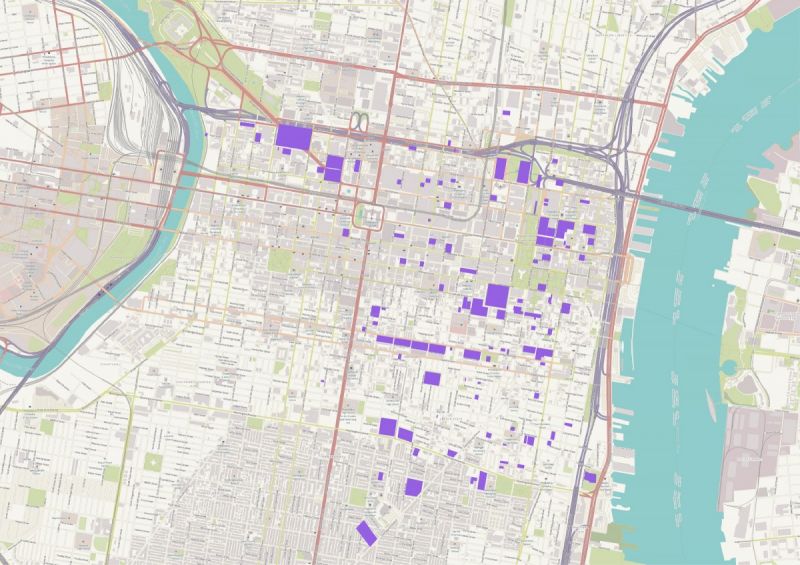
→ Click * here * for the Historical Burial Places Map and Database page
As longtime advocates for those who can no longer speak for themselves, PAF is lobbying for clearer municipal laws that compel developers to handle burial remains respectfully. We have created an extensive geographical database (GIS) that currently includes more than 200 historic burial places in Philadelphia.
It is PAF’s intention that,in addition to being useful to historians, archaeologists, and other researchers, consulting the database of known cemeteries and private family plots will become a starting point in the process of due diligence of both developers and the city of Philadelphia when considering new projects.
The database, originally the personal research of archaeologist Kimberly Morrell, has been assembled from historic maps, newspapers, academic theses and other sources. Research is ongoing, but the database is the most comprehensive such resource to date.
More Recent Philadelphia Burial Issues In The News…
Philadelphia Burial Issues In Past News…
FEATURED ARTIFACT…
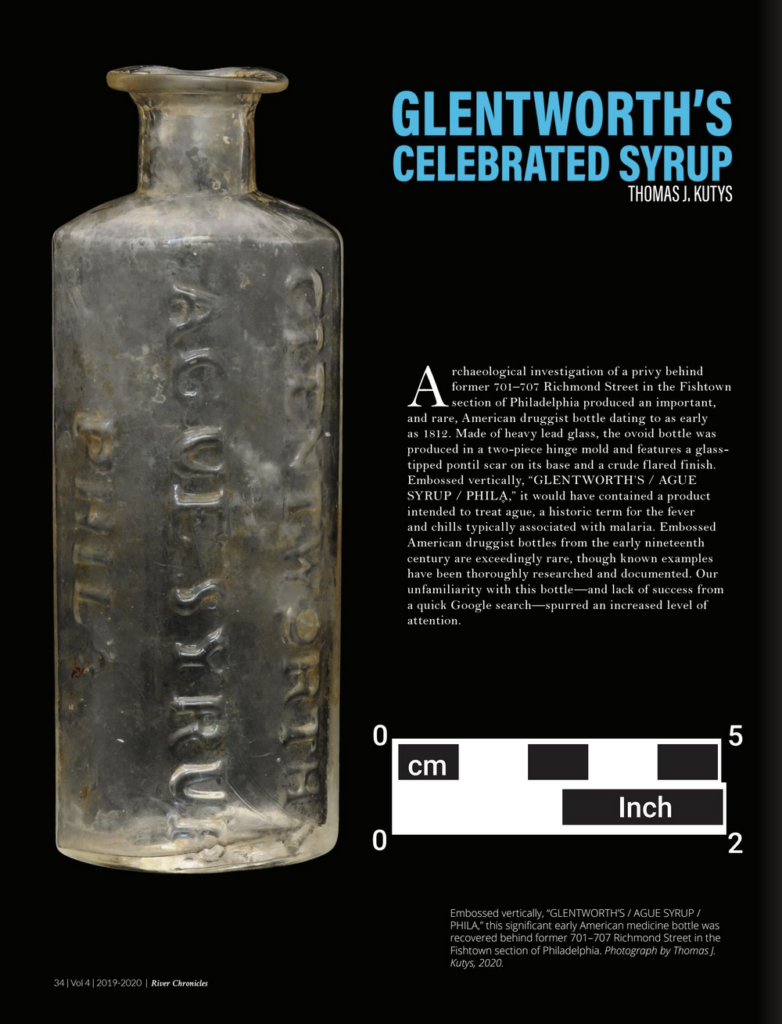
Scroll to pages 34-37 here to read more about this artifact in Glentworth’s Celebrated Syrup by Thomas J. Kutys (The Journal of Philadelphia Waterfront Heritage and Archaeology, Vol. 4, 2019-2020). This insight into Philadelphia’s past stems from an extensive PennDOT construction project along Interstate I-95, north of the Benjamin Franklin Bridge, on properties that once formed part of several waterfront neighborhoods. The archaeological investigations were undertaken by archaeologists employed by AECOM Corporation in Burlington, NJ.
The 2023 Pennsylvania Archaeology Month Poster is here!
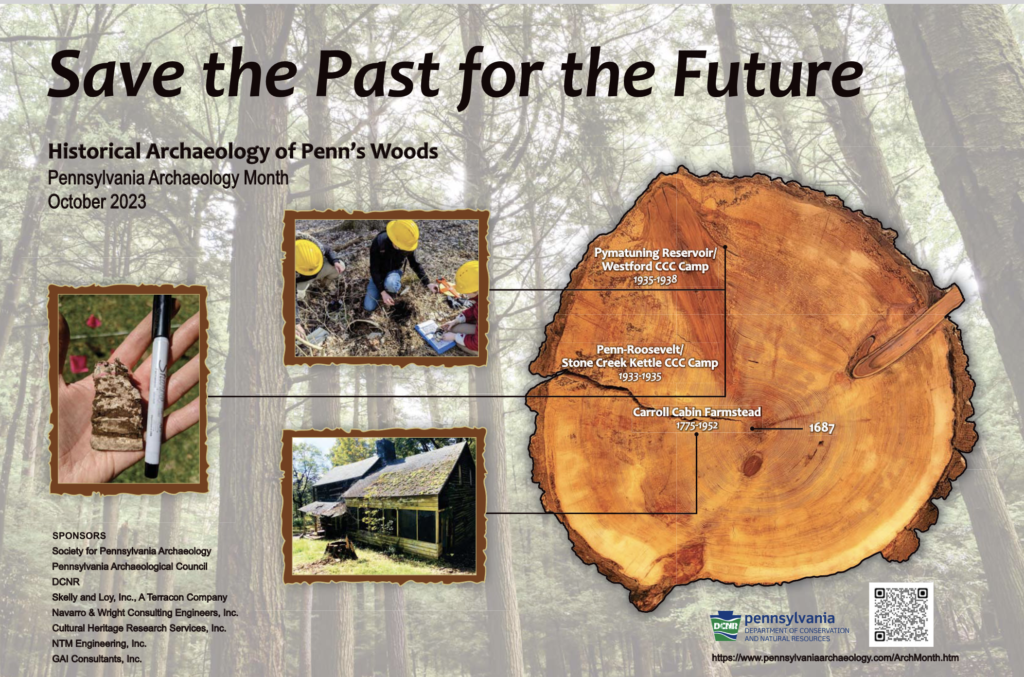
Key to the artifacts in the 2023 Poster.
Established in 1988, the SHA Award of Merit recognizes specific achievements of individuals and organizations that have furthered the cause of historical archaeology. Although the award is given for scholarly as well as other contributions, the honorees need not be professional archaeologists nor members of The Society for Historical Archaeology. A full and varied range of contributions to the field are considered. The Award of Merit is an inscribed certificate under glass, suitably framed, and normally a number of awards are given each year. (SHA)
A brief history of archaeology at Independence National Historical Park can be read here…
by admin
